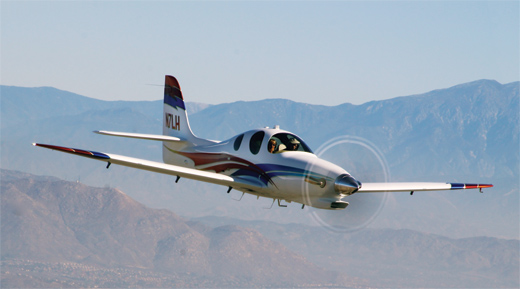
On a clear winter day with a light breeze blowing out of the west, Lancair Evolution N7LH made the leap from project to airplane as it jumped off the runway at Chino Airport in Southern California. Two and a half years of work and a considerable amount of money came together in that moment for Wendell and Martha Solesbee as Wendell took to the air for their plane’s first flight. He had long considered hiring a test pilot for the first flight, but his own desire to have that honor and his confidence born from many years of flying experience, including many hours in his Lancair IV-P, convinced him that he could handle the job, which he did with aplomb.
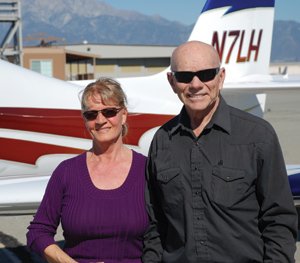
Wendell and Martha Solesbee are quite pleased and a little relieved that all of their hard work has finally paid off.
As we concluded the previous installment of this series, the Solesbees had their plane just about ready to fly, apart from some fine-tuning and the paperwork. Should be flying in a week or two, right? Well, not so much. The Riverside Flight Standards District Office (FSDO) wanted to see a maintenance manual for the airplane. Lancair had already produced one for a number of previous Evolutions, so it was quickly forthcoming. Almost a month and a number of minor revisions later, the Solesbees had an approved maintenance manual and permission to proceed with their application for an airworthiness certificate. The FAA requires an approved maintenance manual only for turbine-powered Experimentals, so all of us piston-powered guys never saw this one coming.
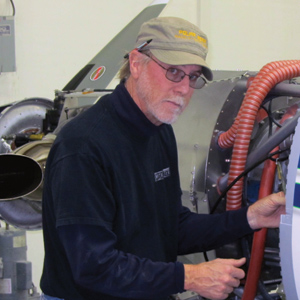
Dave Morss performed safety inspection and DAR duties for the Solesbees. His expert eye caught a couple of important problems that Wendell quickly remedied.
The next step was to contact a Designated Airworthiness Representative (DAR) to process the airworthiness certificate. The Solesbees wanted to use someone who was familiar with the Evolution, so they got in touch with Dave Morss, who needs no introduction to those familiar with Lancairs. He is an A&P/IA and test pilot working out of Northern California and is very familiar with the Evolution. However, another blessing from the Riverside FSDO was needed to allow Morss to come into its area and work. Another wait, but it was worth it. Morss’s experienced eyes picked up a few minor but potentially critical mistakes that Wendell quickly corrected. A nut was missing from an aileron hinge bolt, and a fuel-tank vent was plugged with masking tape left over from painting. This is why an initial condition inspection by an expert, and not the builder, is so critical. It is amazingly easy to miss things like this, no matter how thorough and careful you are.
Paper Shuffle
With the DAR satisfied, the Solesbees got their airworthiness certificate and operating limitations. They were now ready to enter the Phase I flight-test period, 40 hours in a designated test area where the plane could be wrung out and proved safe for flight. The only thing left to do was put the airplane back together after the condition inspection. Installing every inspection cover, closing every hatch, and replacing the cowl was a good day’s work, and then some.
With all of this done and the decision to forgo a hired test pilot made, there was little reason not to get in the plane and see what it would do. Even though this was to be Wendell’s third first flight, it was clear that he was gripped by a combination of anxiety and excitement ahead of the big moment. And who wouldn’t be? This is a big, fast airplane and the result of a lot of money and hard work. There was a lot riding on it, but he did a good job of maintaining his focus and composure.
Watching from the ground, you could see the Evolution’s exceptional performance. It came off the runway in what appeared to be less than 1000 feet. This plane is no runway hog, especially when lightly loaded, but then you would expect that with 750 shaft horsepower on tap. A few circuits south of the airport and a low pass for photos, capped with a firm but respectable landing, and the first flight was over. Martha was visibly relieved as their new plane taxied in, and Wendell seemed pleased with the results of their endeavor. A great start. Only 39.5 hours to go.
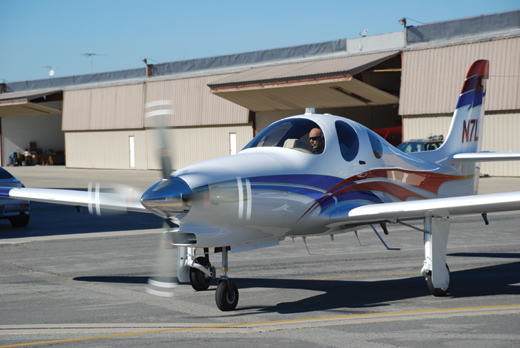
Wendell taxis out for his first flight in N7LH.
How Does It Fly?
The first question out of everyone’s mouth when Wendell came back from his first flight, and ever since then, is: How does it fly? “Like a Bonanza, but with super power,” Wendell replies. But there is a bit more to it than that. The Evolution has a lot of power, more than twice as much as a Bonanza, and when you push the throttle forward, you get pressed back into your seat. All that power means you need a lot of right rudder to keep the plane going straight down the runway.
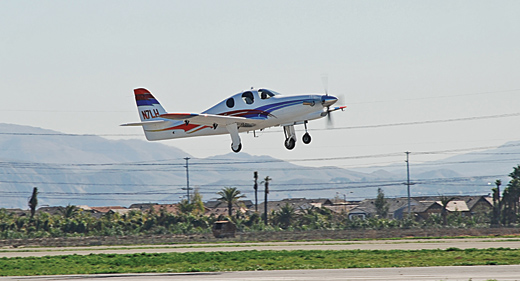
The ground roll was short and the acceleration brisk as N7LH slipped the surly bonds of earth for the first time and climbed skyward.
Comparisons to the Lancair IV-P are inevitable, and Wendell is well qualified to draw them. The Evolution rotates at a lower speed and as a consequence it uses less runway—a lot less. This is a plane for which taking off and landing from a 2000-foot runway at sea level are now reasonable things to consider. Such things would be almost unthinkable in a IV-P. The Evolution is less sensitive in pitch than the IV-P, inspiring more confidence in its handling, especially for someone just getting used to the plane. The other feature that makes short runways less exciting is beta. Pull that big Hartzell four-blade prop into beta and you slow down in a hurry. Midfield turnoffs from Chino’s 4858-foot-long Runway 26R are now a piece of cake in the Evolution. In the IV-P, Wendell would almost always use the full length of the runway to land.
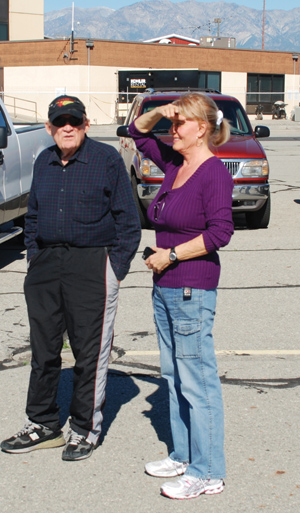
Martha and a friend strain to see Wendell as he heads south of the airport for some brief flight testing.
While these first impressions are valuable and interesting to hear, they’re not the final word on the Evo’s handling. In its current state without an interior, the airplane is right at the forward edge of the CG envelope. As a consequence, it runs out of elevator at around the same time as it touches down, making “greaser” landings just about impossible. Bags of sand—100 pounds’ worth—in the baggage compartment more than took care of that problem, making graceful arrivals much easier now. Once the interior is finished, the plane will need to be reweighed; ideally, no permanent ballast will be required. The only other complaint is that the plane used a lot of fuel during the test period, where most of the flying has been down low. The Solesbees are still coming to grips with the difference in fuel flow between the Evolution and the IV-P.
Reflecting on the Building Process
Once the Solesbees were well into their Phase I flight testing, it was time to reflect on the building process: What went well? What didn’t? What differed from their expectations? To start, Wendell says that the composite work on the basic structure was much better than he had expected, and much better than the Lancair IV-P. Everything was smooth and true and required almost no filling to prepare for paint. Considering how picky he was about the paint job, this is a fine compliment. Another positive: Lancair’s willingness to make improvements to parts as the project progressed. There were a few things that needed to be redesigned and improved on the early Evolution kits, most notably the landing gear. Lancair took care of everything at no charge. In addition, factory technical reps were always available to answer questions and give support—an important resource for any builder, but especially if you are among the first.
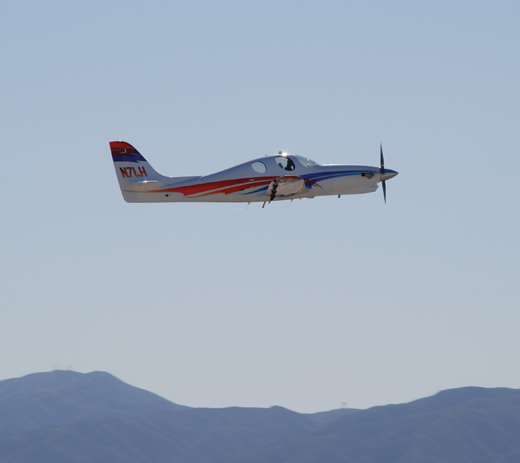
Wendell makes a low pass in front of Martha and friends at the end of a successful first flight.
The area in which the Solesbees experienced the most trouble was the wiring. The kit comes with a prefabricated instrument panel and wiring harnesses, but there were still some difficulties. Some were simple—like wires being reversed in their terminating connectors—but others were much harder to track down. With Wendell’s strong electrical background, he was able to diagnose and repair these issues, but they would have been a real challenge for a less electrically inclined builder. This is an area where Lancair needs to improve, he noted.
When Wendell was asked what the hardest part of building the Evolution was, he quickly answered, “The cowl, especially the lower cowl.” Even with his considerable composite experience, he found the lower cowl to be challenging with its various baffles, along with the precise fit the cowl required. Additionally, he had complicated the matter by insisting on installing blind fasteners, but his desire to make it look as good as possible would allow nothing less.
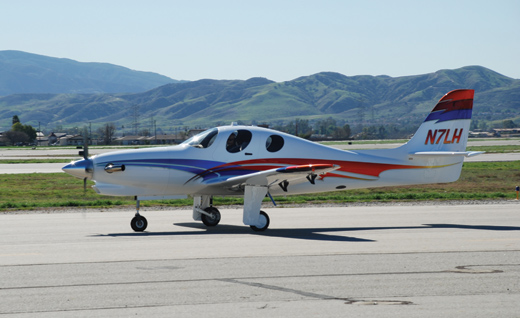
Wendell taxis back to the ramp to an expectant crowd and happy wife.
Can Anyone Build One?
Wendell and Martha Solesbee are experienced airplane builders whose resumes include a Lancair IV-P in addition to their now-complete Evolution. Wendell has a background in electrical engineering, as well as many years of experience running an automotive paint and body business. They used almost no professional assistance outside of the initial mandatory factory program to assemble the major structural components. Over the course of two-and-a-half years, they invested 2500 hours in their project. Considering the size and complexity of the Evolution, that seems pretty reasonable. They laugh at the idea of a first-time builder undertaking the project—unless he or she has a great deal of experience in a similar field—and duplicating what they did in any reasonable amount of time, if ever.
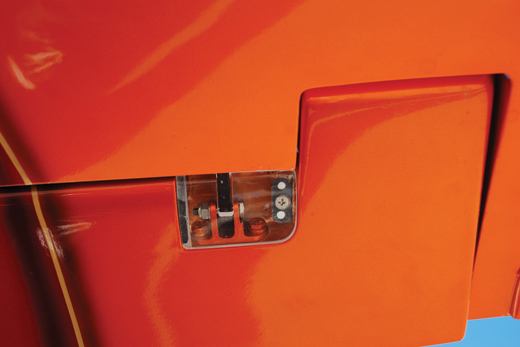
These acrylic aileron and flap hinge covers are one of the Solesbees’ nice custom touches.
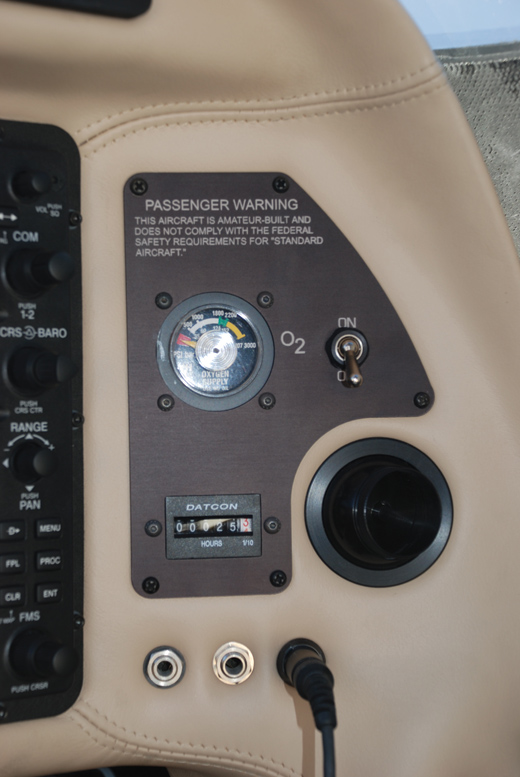
The oxygen meter and Hobbs meter fit nicely in this custom side panel by Evolution pro-builder Mike Custard.
One reason KITPLANES® decided to follow the Solesbee project was to answer a simple question: Can an airplane as large, expensive and technically formidable as this one actually be constructed by an individual? Well, obviously it can. Even taking into account Wendell’s exceptional abilities and determination—powerful qualities when combined with experience and the financial wherewithal to support such a project—it’s plain to see that the Evolution is an airplane that can be constructed by a determined individual.
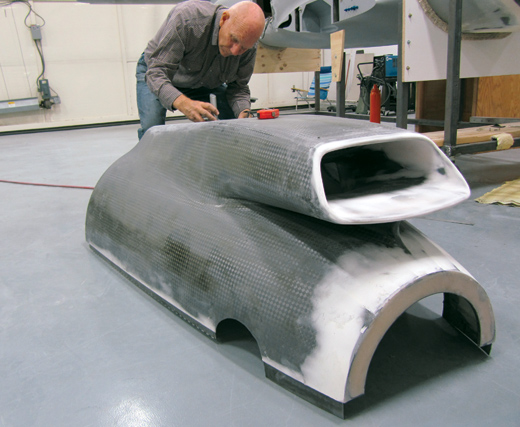
The engine cowl proved to be Wendell’s greatest challenge, and that doesn’t even consider the extra work of creating a blind fastener system for the cowl.
We’re going to take a break from this series to let the Solesbees finish up their interior and put the airplane to the kind of use it was built for. Later this year, we’ll rejoin them to see how the Evolution compares to the IV-P—in speed, cost, efficiency, comfort and reliability, plus a few other categories. And we’ll take a closer look at the value represented by this sleek dream machine.
For more information on Lancair, call 541/923-2244 or visit www.lancair.com.
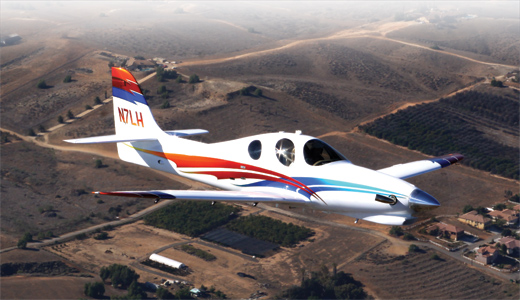

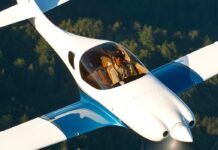

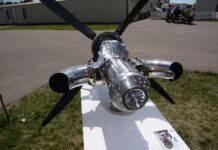

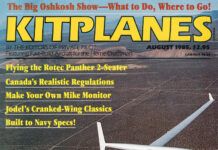
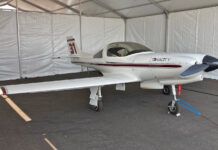
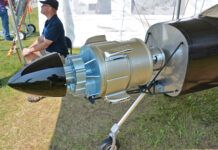
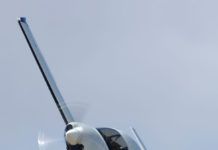
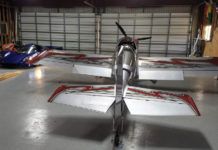

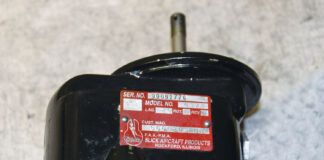
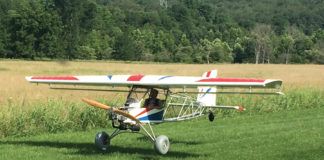

Dave, I’m sure this cost more than an “arm-and-a-leg!” As the owner/builder of a Lancair ES, and familiar with the 4P (worked on several), I’m curious as to the cost differences when complete (orders of magnitude only 🙂 )
Coreection, the first glass airplane was not the Glasair 1 in Lancair’s case but the 235, I believe…